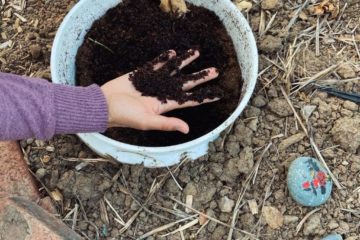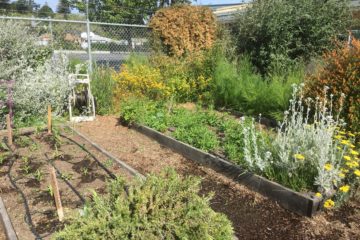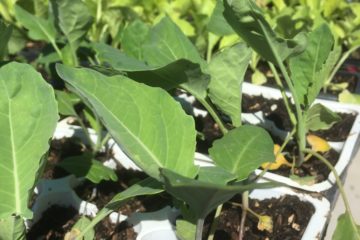Written by Emma Finklang, Grant Writing & Development
Any gardener who has spent an afternoon pulling weeds knows that soil requires some upkeep. Healthy soil free from weeds and full of nutrients can help nourish your plants year-round. Mulch is one tool to keep soil healthy that most people already have in their own backyards. By definition, it is any protective layer of material that is spread on top of the soil surrounding plants (NRCS).
There are two types of mulch: inorganic and organic. If you’ve ever seen black plastic laid out over the soil in a garden, that’s an inorganic mulch helping to protect the soil. These are more common in cold climates because they absorb the heat from the sun and warm the soil. By contrast, organic mulches are any type of organic material like lawn clippings, bark chips, rocks, compost, or even paper (Good Housekeeping).
Note: when using paper, avoid color ink as it can damage the living microbes in your soil. A major difference between the two is that organic mulches decompose and give nutrients back to the soil, while inorganic mulches do not.
Why are mulches so beneficial? For one, both inorganic and organic mulches block the sun so weeds can’t perform photosynthesis and growth is inhibited. They also help regulate soil temperature. Organic mulches have a host of other benefits as well. They help crop growth by conserving soil moisture: water can fill in through the pores in a mulch but doesn’t evaporate out because the soil is covered, so there’s less water loss on sunny days (NRCS). Additionally, they enrich the soil by adding nutrients and feeding earthworms (SonomaMag).
Whether planting new seedlings or tending perennials, it is best to wait to add mulch until the soil warms because cold, damp soil can cause decay of seeds and seedlings (NCRCS). At the end of the warm season, allow your organic mulch to decompose naturally and re-apply in the spring to add nutrients and encourage soil drainage. It is important to weed before adding mulch. When applying an organic mulch, make sure to cover the soil around your plants completely. The mulch should be laid down four inches thick if it is coarse-textured and two inches thick if it is fine-textured (SonomaMag). To add new plants to your garden, simply push the mulch aside at the place of planting.
As the weather warms up into spring, now is a great time to consider applying mulch in the garden. Take a look around your backyard and see what materials you might already have to cover the soil.
Sources:
The Editors. “The Ultimate Mulch Guide: How to Find the Best Type for Your Garden” Good Housekeeping, 26 May 2020, https://www.goodhousekeeping.com/home/gardening/a20706549/how-to-mulch-your-garden/. Accessed 1 March. 2021.
Gannon, Lyn. “Mulch–a Gardener’s Best Friend” UC Master Gardener Program of Sonoma County, http://sonomamg.ucanr.edu/Sonoma_Gardener_Articles/Mulch–a_Gardeners_Best_Friend/. Accessed 1 March 2021.
“Mulching” Natural Resources Conservation Service, https://www.nrcs.usda.gov/wps/portal/nrcs/detail/?cid=nrcs143_023585. Accessed 1 March 2021.



0 Comments